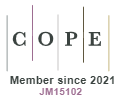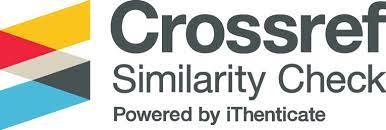FinTech – A Step Ahead or a Force of Creative Destruction in Finance
DOI:
https://doi.org/10.18778/2391-6478.2.30.06Keywords:
creative destruction, innovation, fintech, blockchain, cloud computingAbstract
The purpose of the article/hypothesis. This article aims to introduce the concept of creative destruction in relation to transformative solutions in finance based on the example of FinTech and innovative technologies with special emphasis on blockchain and cloud computing. As a means to reach its objective this paper analyzes in depth the concept of creative destruction originated by Schumpeter in 1940s and translates it to modern business financial environment to present the reader with double-sided effects of introduced changes, their unique and unprecedented character both from the perspective of FinTech and traditional financials intermediares.
Methodology. In order to research the effects of innovations on the financial markets the critical study of the foreign literature will be conducted.
Results of the research. The conducted considerations displayed a parallel between innovations introduced by FinTech and actions undertaken by traditional financial institutions in order to remain strong players on the financial market. Even though solutions provided by start-ups may debilitate gained trust, which is one of the fundamental cores of finance, and raise questions related to breach of established regulations, they support the market with increased efficiency and variability of products and services. However, it can be easily perceived that advantages of introduced solutions outweigh possible dangers, and financial intermediaries, especially banks, decide to operate on the basis of the enagament model that supposes a synergy with start-up to blend favourable aspects of both of them including banks’ well-established repute and trust along with FinTech’s innovative potential.
Downloads
References
Arjunwadkar, P., (2018). Fintech: The Technology Driving Disruption In The Financial Services Industry. Auerbach Publications.
Google Scholar
DOI: https://doi.org/10.1201/9781351036504
BCBS, (2018). Implications of fintech developments for banks and bank supervisors. Basel Comittee on Banking Supervision, https://www.bis.org/bcbs/publ/d431.pdf [Accessed: 01.12.2020].
Google Scholar
Coughlin, J.F., (2006). Connected Health and the Creative Destruction of Healthcare. AgeLab 06-01. Cambridge, Massachusetts: Massachusetts Institute of Technology.
Google Scholar
Deloitte (2018). Crunch Time IV – Blockchain for finance.
Google Scholar
EBF, (2020). The use of Cloud Computing by Financial Institutions. European Banking Federation, ebf.eu.
Google Scholar
FRED economic data, https://fred.stlouisfed.org/ [Accessed 28.10.2020].
Google Scholar
Gupta, P., Tham, T. (2019). Fintech, Berlin, Boston: De Gruyter.
Google Scholar
INGWB.com, https://view.ingwb.com/six-technologies-changing-finance [Accessed: 22.11.2020].
Google Scholar
KPMG, (2017). Value of fintech. The City of London Corporation. October 2017.
Google Scholar
Lockwood, M. and Lent, A. (2010). Creative Destruction: Placing innovation at the heart of progressive economics. London: IPPR.
Google Scholar
Lorente, J.J. and Schmukler, S.L. (2018). The Fintech Revolution: A Threat to Global Banking? International Political Economy: Investment & Finance eJournal.
Google Scholar
Markowich, S. (2016). Creative Destruction in Bank, https://www.theclearinghouse.org/publications/2016/2016-q1-banking-perspective/creative-destruction-in-banking [Accessed: 29.10.2020].
Google Scholar
Monem, H.A. (2019). Using Blockchain in Financial Services. Arab Monetary Fund, 54/2019.
Google Scholar
Navaretti, G.B., Calzolari, G., Mansilla-Fernández, J.M., Pozzolo, A.F. (2018). Fintech and Banking. Friends or Foes? European Economics: Macroeconomics & Monetary Economics eJournal.
Google Scholar
DOI: https://doi.org/10.2139/ssrn.3099337
NYTimes, https://www.nytimes.com/2000/06/10/your-money/IHT-half-a-century-later-economists-creative-destruction-theory-is.html [Accessed: 28.10.2020].
Google Scholar
OECD, https://www.oecd.org/coronavirus/policy-responses/coronavirus-covid-19-sme-policy-responses-04440101/ OECD (2020) Coronavirus (COVID-19): SME policy responses [updated on July 15th, 2020], oecd.org [Accessed 31.10.2020].
Google Scholar
Olley, G. and Pakes, A. (1996). The Dynamics of Productivity in the Telecommunications Equipment Industry. Econometrica, 64(6), doi:10.2307/2171831.
Google Scholar
DOI: https://doi.org/10.2307/2171831
Perkins, D.W., Webel, B., Cooper, C.R., Getter, D.E., Jaikaran, C., Labonte, M., Miller, R.S., Scott, A.P., Shorter, G. and Su, E. (2020). Fintech: Overview of Innovative Financial Technology and Selected Policy Issues, CRS Report R46332.
Google Scholar
PWC, (2016) Blurred lines: How fintech is shaping financial services, Global Fintech Report March 2016.
Google Scholar
PWC, (2019) Crossing the lines: How fintech is propelling FS and TMT firms out of their lanes, Global Fintech Report 2019.
Google Scholar
Ricci, D. (2020). Creative Destruction. In A Political Science Manifesto for the Age of Populism: Challenging Growth, Markets, Inequality and Resentment (pp. 45–60). Cambridge: Cambridge University Press.
Google Scholar
DOI: https://doi.org/10.1017/9781108785440.004
Riemer, K., Hafermalz, E., Roosen, A., Boussand, N., Aoufi, H.E., Mo, D., and Kosheliev, A. (2017). The Fintech Advantage: Harnessing digital technology, keeping the customer in focus. University of Sydney, Business School and Capgemini.
Google Scholar
Rojas, L. (2016). N° 24. La revolución de las empresas FinTech y el futuro de la Banca. Disrupción tecnológica en el sector financiero. Caracas: CAF.
Google Scholar
Rosati, P. and Cuk, T., (2019). Blockchain Beyond Cryptocurrencies: FinTech and Strategy in the 21st Century.
Google Scholar
DOI: https://doi.org/10.1007/978-3-030-02330-0_10
Schumpeter, J. A. (1983). Theory of Economic Development. New York: Routledge, ISBN: 978-0-87855-698-4, The Fundamental Phenomenon of Economic Development, para. 1 and 2.
Google Scholar
Schwab, K. (2016). The Fourth Industrial Revolution. Geneva: World Economic Forum.
Google Scholar
The World Bank, (2016) World Development Report 2016: Digital Dividends, worldbank.org. https://www.worldbank.org/en/publication/wdr2016 [Accessed: 29.11.2020].
Google Scholar
Xavier-Bender, G. (2014). Creative destruction in energy sector – from distruption to transformation. Creative destruction in the energy sector paper series 2014. The German Marshall Fund of the United States. Chapter 1.
Google Scholar
Downloads
Published
How to Cite
Issue
Section
License

This work is licensed under a Creative Commons Attribution-NonCommercial-NoDerivatives 4.0 International License.














